
Volkswagen Golf Cabriolet (2011-2016) review
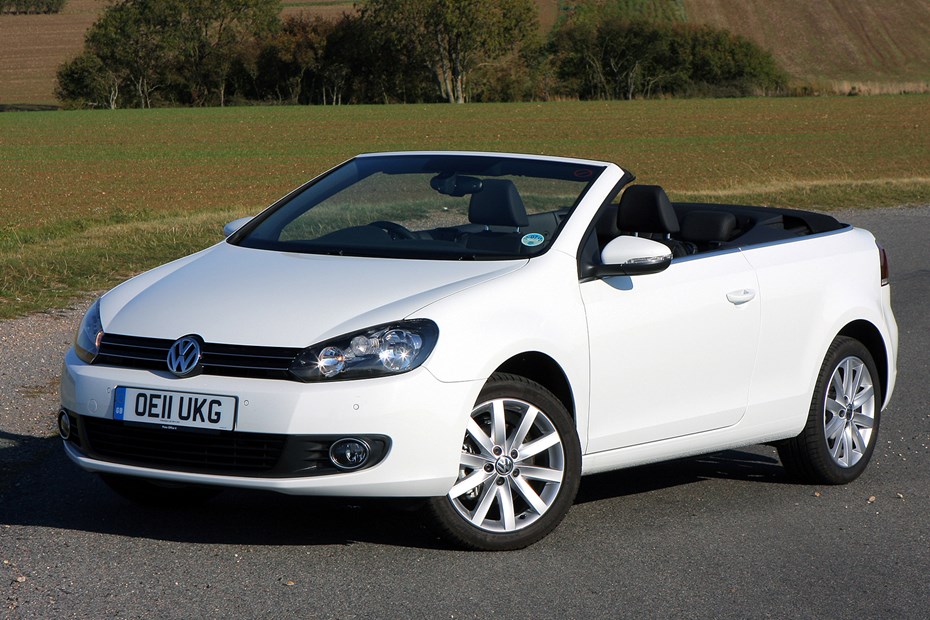
At a glance
| Price new | £22,770 - £29,935 |
|---|---|
| Used prices | £2,104 - £9,349 |
| Road tax cost | £35 - £215 |
| Insurance group | 17 - 29 |
Get an insurance quote with

|
|
| Fuel economy | Not tested to latest standards |
| Range | 532 - 786 miles |
| Number of doors | 2 |
| View full specs for a specific version | |
Available fuel types
Petrol
Diesel
Pros & cons
- Refined drop-top drive
- Good selection of engines
- Light and quick soft-top roof
- Not much fun to drive
- Awkward boot opening
- Little rear passenger room
Volkswagen Golf Cabriolet (11-16) rivals
Overview
Is the Volkswagen Golf Cabriolet any good?
Volkswagen’s Golf Cabriolet earned itself a cult following since first going on sale way back in in the UK 1980 with the Mk1 model. Different iterations of the car continued to sell up until 2002 and after a nine-year absence, brought it back between 2011 and 2016.
The looks of the 2011 model were almost identical to the concurrent Golf Mk6 model, but the raked windscreen and lower roofline gives it that extra edge. There was the pick of some of the company’s best engines too, including the excellent 1.2-litre TSI petrol choice and the frugal and low-emitting 1.6-litre TDI with BlueMotion technologies. Top models – the GTI and R – were powered by 210 and 265hp versions of VW’s excellent 2.0-litre TFSI engines, reflecting the performance of their hatchback counterparts.
The electrically operated, soft-top roof was one of the most impressive aspects of the car. It could be lowered and raised in around 9.5 seconds up to 18mph, which was quick, especially compared to some of its rivals. The option to go for a soft-top over a heavy hardtop means the car is lighter and despite the choice to go with the material roof, there’s no compromise on refinement in the car, whether the roof is up or down.
What’s it like inside?
It’s all standard fare here, with the majority of the switches and dials straight from the Mk6 hatchback. For anyone in the front two seats, everything is just as comfortable as you would find in the normal Golf model. The seats are comfortable with a good amount of support in the sides and for your back, making longer journeys pain-free. There is enough adjustment in the seat and steering wheel to be able to get yourself comfortable without too much trouble.
Jump in to the back though, and you may have to be selective about your passengers in order to save any taller friends from finding their knees under their armpits. Anyone around six foot up will want to spend as little time as necessary in the rear. The seats are fine for shorter passengers or children though, and they will find the rear a pleasant place to be.
Things are refined, even with the roof down you won’t find yourself shouting to be heard over the minimal bluster that you get in the cabin. While there is the usual hum of the diesels, engine noise from all the units has been well contained, particularly considering the type of car you are in. There is a little road and wind noise, but nothing too intrusive to spoil your time in the car.
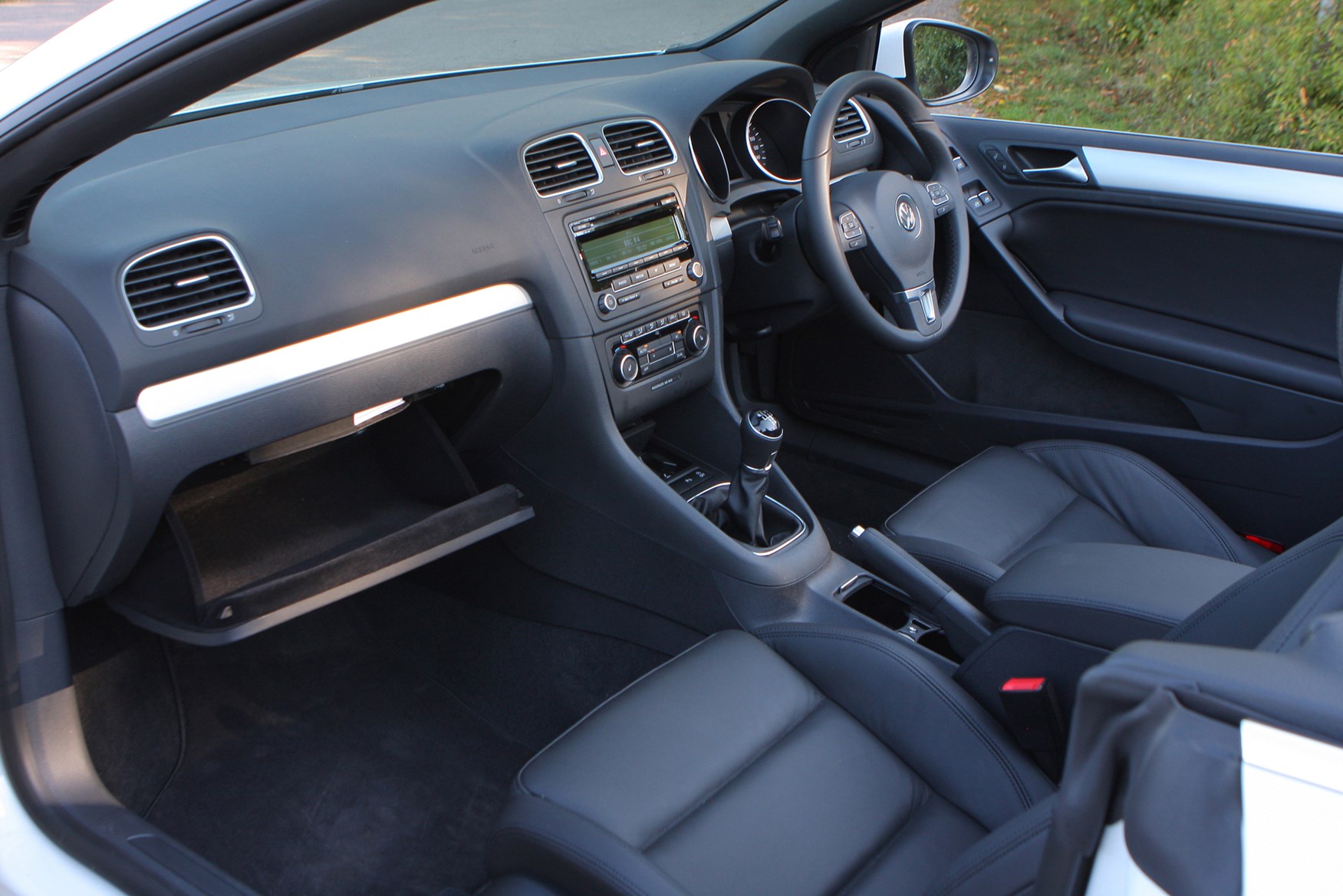
How practical is it?
This is never going to be a strong point for a fairly small convertible, although it is still usable. Having a soft-top means that space in the back isn’t compromised when it’s folded down because it folds in on itself in a Z-shape. With the roof up or down there is 250 litres of boot space on offer: this will fit a couple of weekend bags with ease, although the narrow opening to put them through does make things a little more awkward.
Space in the cabin is also at a premium with the glovebox and door cubbies offering the most practical spaces. Despite having just three doors, rear passengers also get a small side storage that can fit a 500ml bottle in quite easily. The rear seats fold 50:50 meaning that if you do have anything a little longer than the average suitcase you can get it in the back and still take one passenger with you.
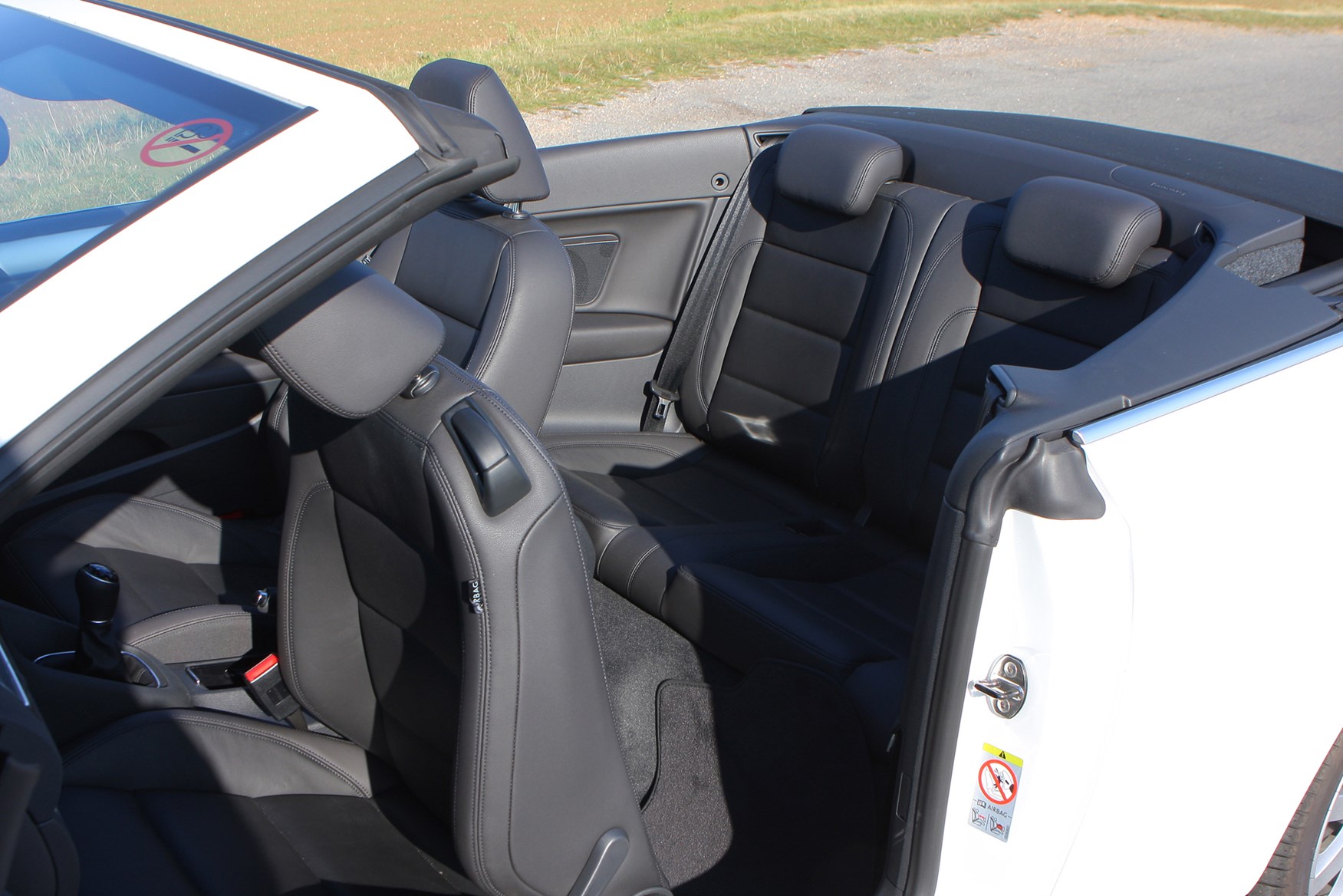
What engines were available?
There was a wide range of engines to choose from. These includes the entry level 1.2-litre TSI petrol with 105hp fitted with a six-speed manual gearbox. The turbocharged unit does need to be worked a little to get the best out of it (it takes 11.7 seconds to go from zero to 62mph), but it’s still a good little engine which is more than adequate for cruising around with the roof down and holds its own on the motorway too.
There is also the 1.4-litre TSI with 160hp that comes with the choice of a six-speed manual or a seven-speed DSG auto ‘box. It will also hit 62mph mark 3 seconds quicker, posting a time of 8.4 to hit the benchmark. The seven-speed DSG is as slick as we’ve come to expect from the manufacturer’s automatic offering, although in ‘Sport’ mode there is a bit of a lurching when it does change gear.
There were also the 1.6- and 2.0-litre diesels with 105hp and 140hp respectively. These are the top options for low-running costs with decent economy and low emissions. The choice of a diesel with a convertible might seem a strange pairing, but it’s a fairly refined engine and doesn’t disturb the drop-top peace too much.
Higher performance GTI and R Cabriolet engines
In addition, the Golf GTI Cabriolet was all about performance and the stats speak for themselves: it is capable of reaching 62mph in 7.3 seconds and it has a top speed of 147mph. It’s not as fast as the standard GTI, which will cover the 0-62mph sprint in 6.7 seconds and has a top speed of 149mph, but it is close. Delivering this performance is the same 2.0-litre turbocharged, four-cylinder petrol engine as found in the standard Golf GTI.
The Golf R Cabriolet was a suitably swift range-topper. Under the bonnet, it was powered by a 265hp 2.0-litre turbo engine with a maximum pulling power of 350Nm. The engine was mated to a six-speed DSG semi-automatic gearbox with paddle-shifters are located behind the steering wheel. Acceleration was impressive – 0-62mph in 6.4 seconds and a top speed of 155mph. That’s nearly a second quicker than the most powerful Golf GTI Cabriolet.
What’s it like to drive?
If you’re after a convertible with plenty of driving involvement and engagement, then the Golf Cabriolet isn’t for you. An interesting drive has been substituted for comfort and convenience for the driver. However, anyone looking for excitement with the roof down should be looking for a roadster rather than a soft-top hatch. This car offers a sensible daily driver with the option for some summer time showing off when needed.
Despite the sedate feel, the car does grip well making it composed, although there is some body lean in the corners. We found the steering to be precise and sharp on our twisty test routes and the body feels nice and rigid, a criticism sometimes aimed at convertibles. The ride is comfortable too, and only the most undulating surfaces will give you any real problems.
The Volkswagen Golf GTI Cabriolet performance was fairly accomplished. Power delivery is extremely smooth and refined, rather than the brutish affair you get from some other hot hatches. In some respects it is a little sedate and not worthy of the GTI badge – it doesn’t scream ‘performance convertible’. Yes, it’s quick but it just doesn’t have the urgency or the excitement of the fixed-roof version.
The VW Golf R Cabriolet is quite a handful with all of that power. A firm grip is needed on the steering wheel or the R could catch you out. It’s nimble and agile on twisty B roads. The ride is 25mm lower than the standard sixth-generation Golf one which the R Cabriolet is based. Feedback from the steering is very good. It is fairly well weighted giving the driver quite a lot of information when driving enthusiastically.
.jpg)
Safety
Despite the absence of a hard roof, there is plenty of safety kit on offer. The early versions came with the recognisable fixed roll bar; however, this is now hidden behind the rear seats and is deployed in 0.25seconds of the vehicle reaching a predefined angle when it rolls.
There are the usual front airbags and drivers also get a knee airbag too. The Cabriolet also comes with side head-thorax airbags, which deploy next to the driver and front passenger and covers the entire height of the car’s interior. The manufacturer has also reinforced the body and stability control is standard.
Running costs and reliability
The top model for keeping down running costs is the 1.6 TDI Blue Motion as this can achieve a claimed average of 64.2mpg. It will hold its value better than the competition from French manufacturers too. Servicing is a little more than you pay at rivals’ garages, but you can expect excellent service.
If looking after the planet is your main concern in car buying, then the best option is the 1.6-litre TDI with BlueMotion Technologies. Thanks to additions like stop/start and battery regeneration, this version emits just 117g/km of CO2.
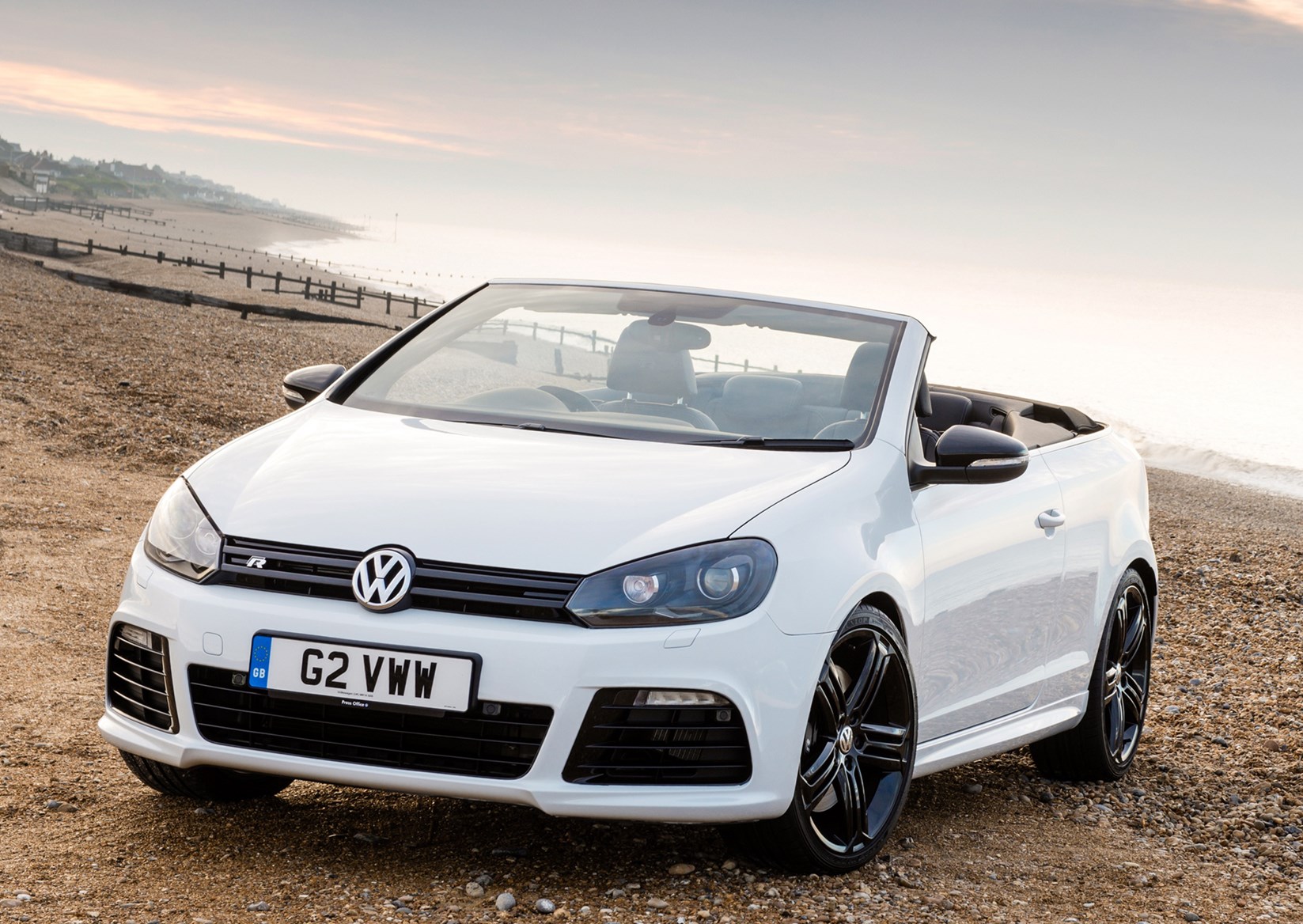
The German manufacturer comes with an enviable reputation for making reliable and incredibly dependable cars. With much of the car based on the Mk VI hatchback model, this should be another car that continues to cement that idea. The main danger here is the roof and the mechanisms that power it. Being a fabric roof should means you should see fewer problems than you might get from a hard-top convertible.
Despite being the more performance-focused soft-top model, the Volkswagen Golf GTI Cabriolet running costs aren’t extortionate. The 2.0-litre turbocharged engine is capable of averaging 37.2mpg, 36.7mpg in the DSG model, according to Volkswagen. The cost of insurance is likely to be the bigger issue, as this model falls in to the 35E category.
Average fuel economy of the Golf R Cabriolet is claimed at 34.4mpg – high 20s should be achievable in real-world driving. The VW Golf R Cabriolet running costs are fairly high but if you want this niche model then you will be prepared to pay that bit extra for this flagship car.
Older models
Volkswagen Golf Cabriolet (1994-2001) review
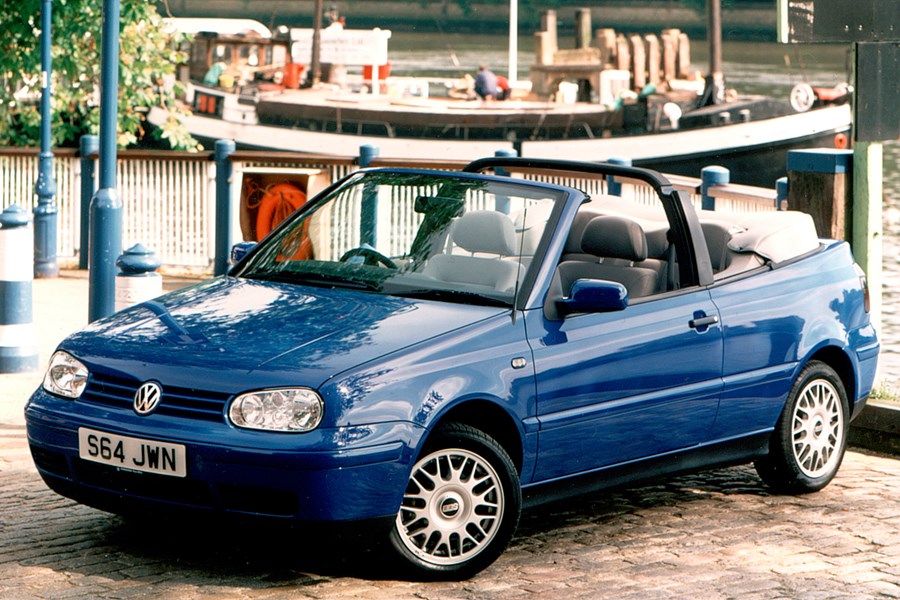
Is the Volkswagen Golf Cabriolet Mk3/Mk4 any good?
The two-door, four-seat Golf Cabriolet is one of the best cabriolets of the 1990s. It’s perfect for the summer months and few cabriolets of the same age can match its overall quality. Secondhand prices are a little dearer than a convertible Peugeot 306 or Vauxhall Astra, but it’s so reliable, safe and pleasant to drive that few competitors can beat it.
A facelift in ’98 brought a newly styled grille and set of headlights, which were added to refresh the front-end and keep it in line with the appearance of the 1998-2004 Golf Hatchback.
What’s it like inside?
The cabin is tasteful, although the dark materials give a sombre look. The steering column and driver’s seat are height adjustable, so even shorter drivers should be able to find a suitable driving position. Peripheral visibility is, obviously, superb with the roof down, only restricted slightly by the roll bar (which increases rollover safety but looks less sleek than the Astra) while pulling out of junctions is safe and easy as there’s no secondary windscreen pillar that may obscure approaching traffic.
The front seats are contoured, hugging passengers on long journeys and providing good support. The two in the back shouldn’t feel crushed, as rear space is fairly generous though it can be blustery when the roof is down. The firm ride is acceptable, and the Golf is settled on all but the bumpiest of road surfaces. The optional heated leather seats look great, adding a touch of class to the cabin.
What’s it like to drive?
The 75bhp 1.8 S is the tamest (and cheapest) engine in the line-up, as it feels sufficiently powered around town but lacks conviction when overtaking on A-roads. For something more capable, the 100hp 1.6-litre SE and 115hp 2.0 are better all-rounders; both come with a choice of five-speed manual or four-speed automatic transmission and can cruise at motorway speeds without straining.
Golf Cabriolet is fun to drive and handles well on twisty B-roads. It grips superbly on corners and feels composed at speed, even though bodyroll is noticeable if it’s thrashed around tight bends. There is little body flex – which is often an issue with soft-tops – due to the stiff body and reinforced anti-roll bar. Parking is easy, as the convertible is easy to manage at low speeds, plus the 10-metre turning circle is in keeping with the class average.

Practicality
Soft-tops are great fun, offering versatile motoring throughout the year and this one’s no different; looking great with the top down in the summer months. As with most two-door four-seaters, quick access to the rear seats can be difficult and a pain if you’re using them all the time. The boot is by no means as practical as the Mk3 Golf Hatchback on a day-to-day basis, but the 270-litre capacity is about the same size as its rivals and big enough to carry a couple of small suitcases.
Folding the rear seats down increases luggage capacity, but the hood – which is electrically powered on all but base models – restricts access to the boot, making loading awkward.
Ownership costs and reliabilty
The majority of used Golf Cabriolets retain their value well and re-sale values are strong, as the last cars were sold in 2001 and are now in the realms of the classic car market. Running costs are generally affordable, insurance groups are average and fuel economy is reasonable at around 35mpg. Service intervals are well spaced but servicing and some parts can be expensive.
Few cars from this era can match the Golf for endurance and Volkswagen is renowned for manufacturing solidly built cars. We haven’t heard of any major faults with it; the bodywork seems resilient and the engine is extremely robust. Regular self-maintenance is important and problems will be rare if servicing schedules are adhered to. A full service history is invaluable as it reassures buyers and increases the chances of a sale.
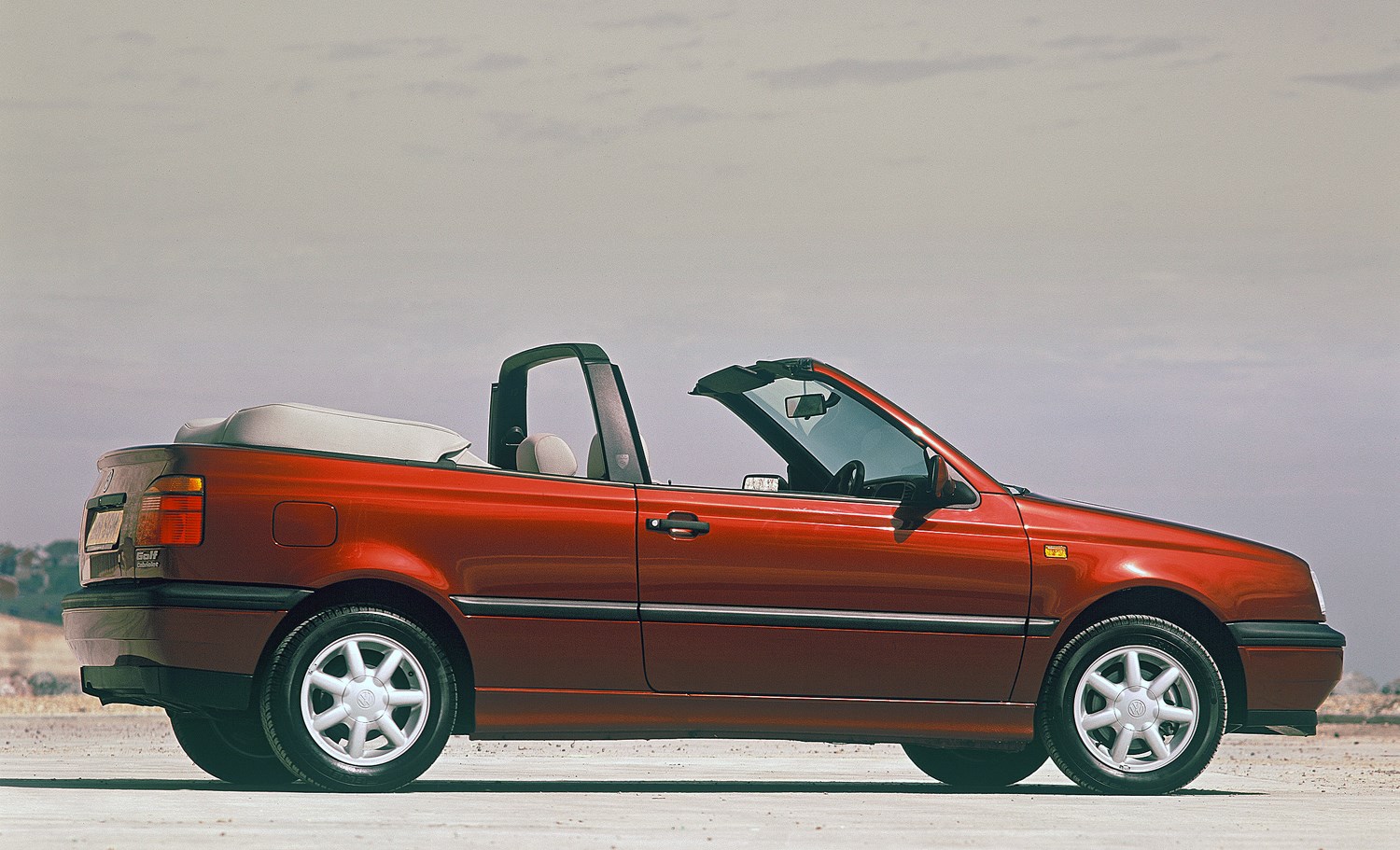



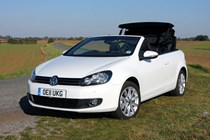
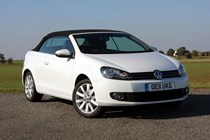
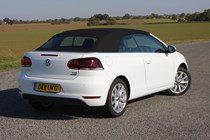
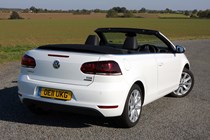
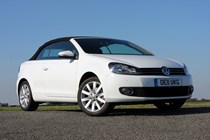
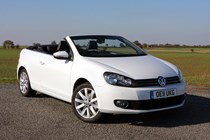
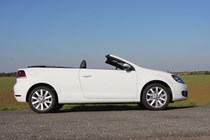
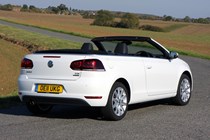
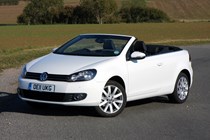
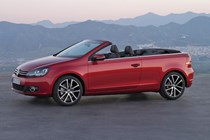
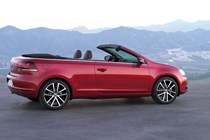
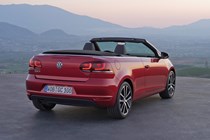
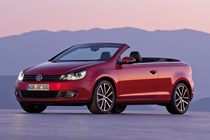
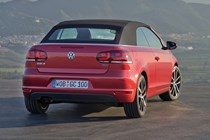
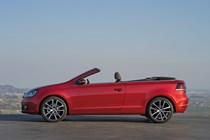
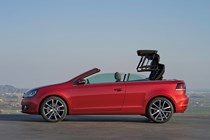
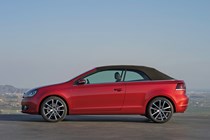
.jpg)
.jpg)
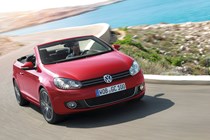
.jpg)
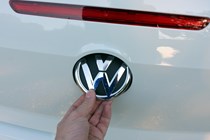
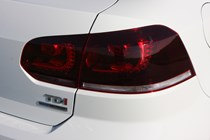
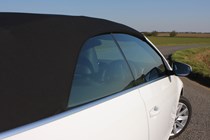
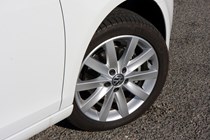
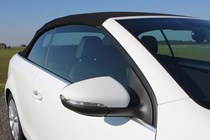
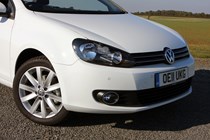
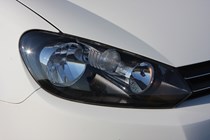
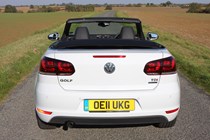
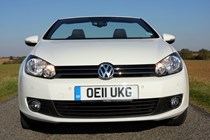
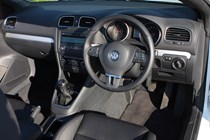
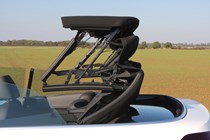
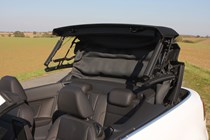
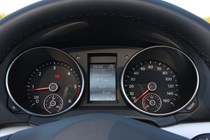
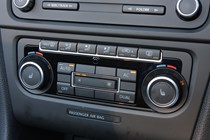
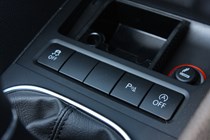
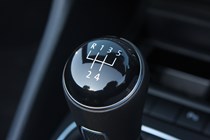
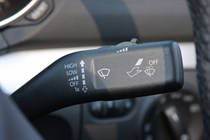
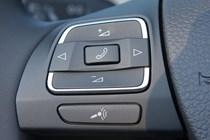
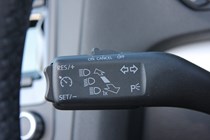
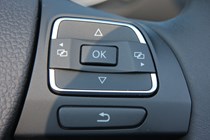
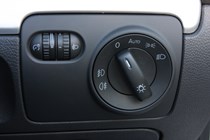
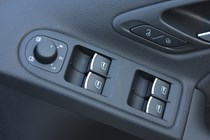
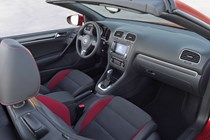
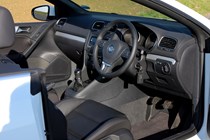
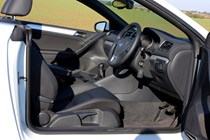
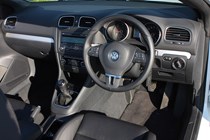
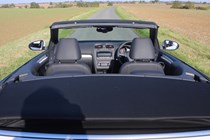
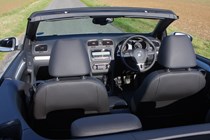
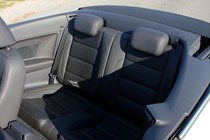
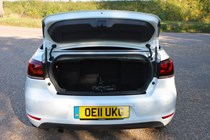
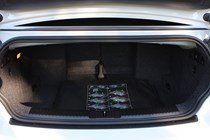
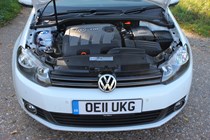
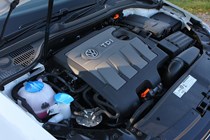
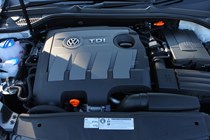
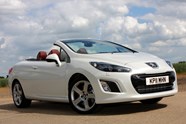
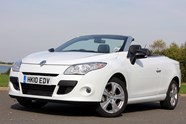
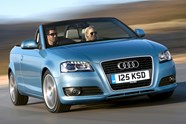


















.jpg?quality=50)
.jpg?quality=50)

.jpg?quality=50)

































